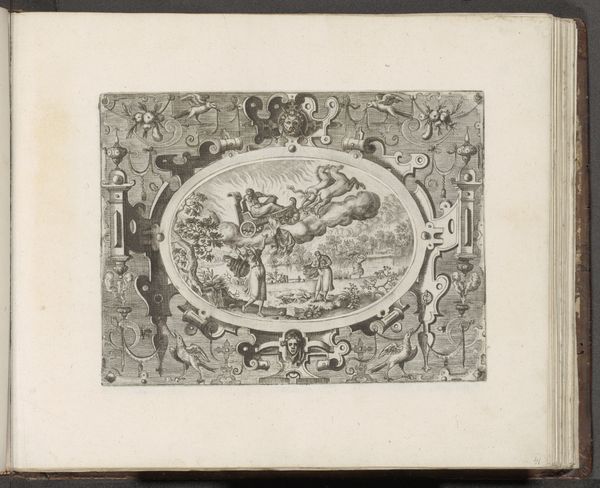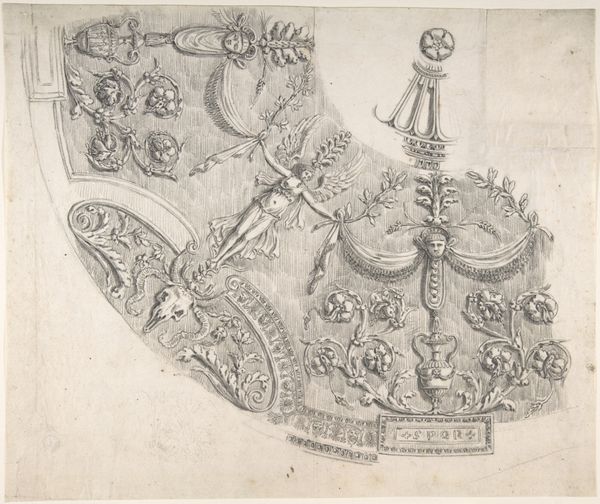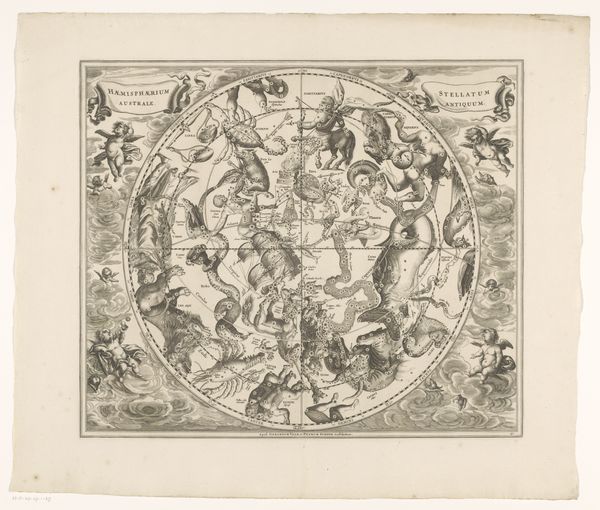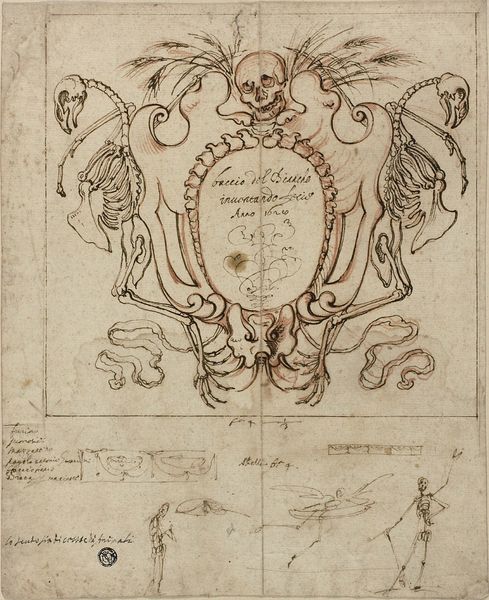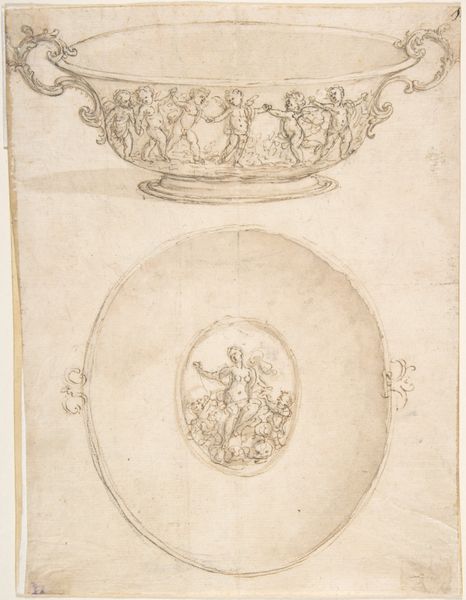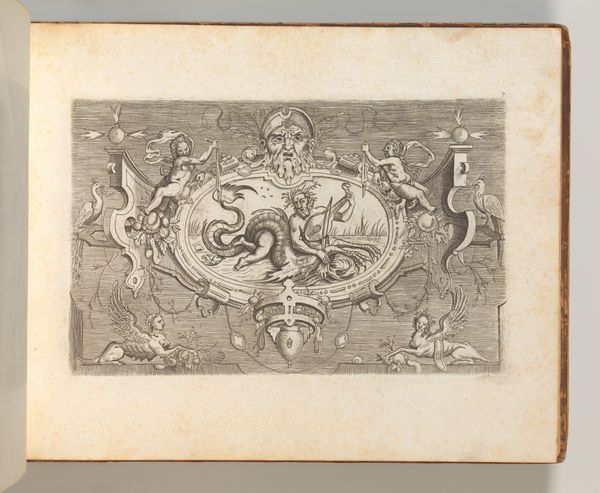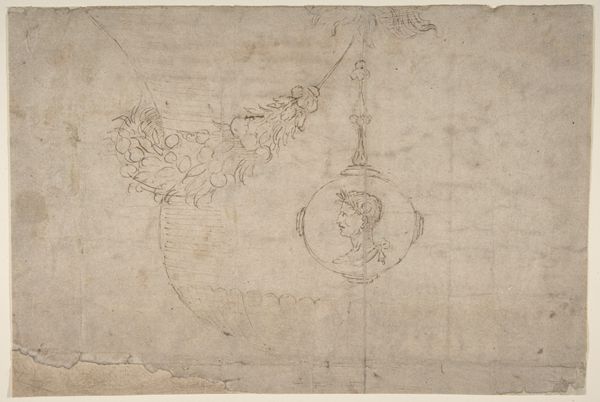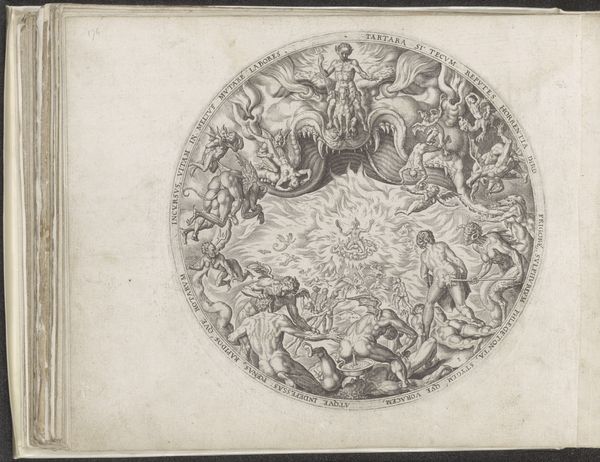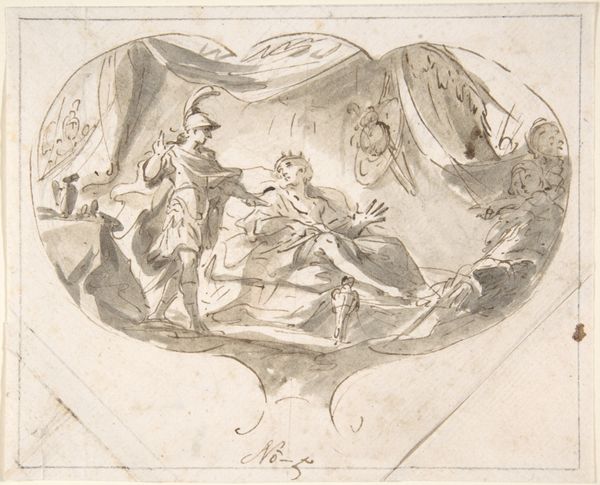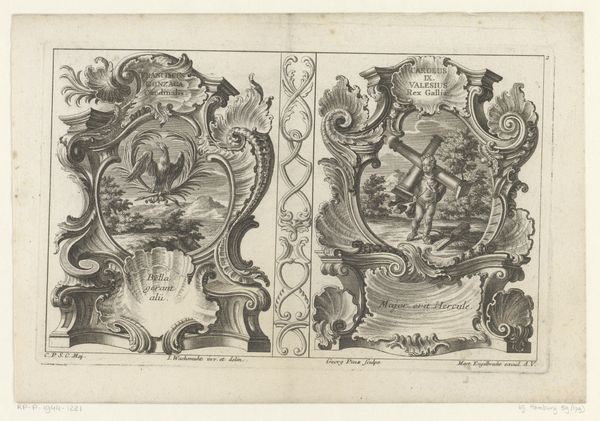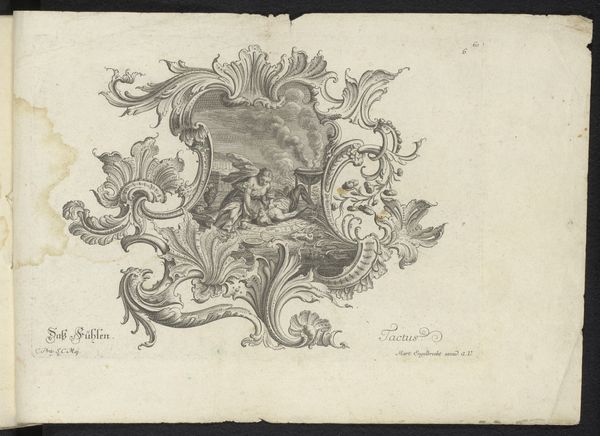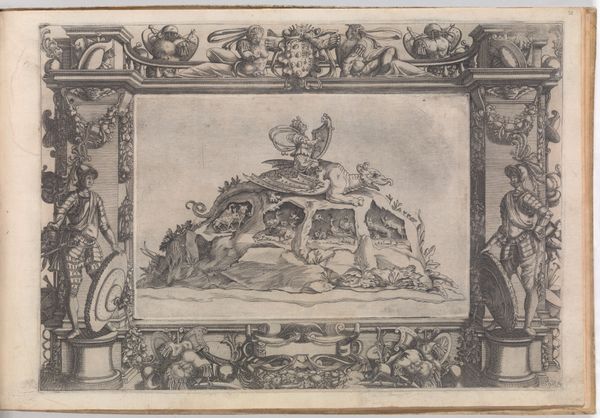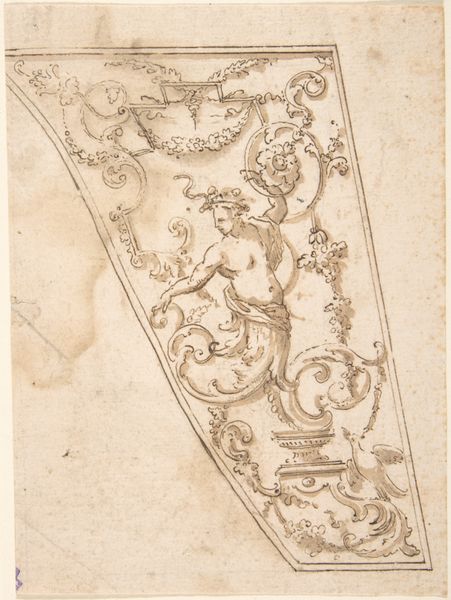
drawing, print, paper, fresco, ink, chalk, charcoal
#
drawing
#
water colours
#
allegory
#
narrative-art
# print
#
charcoal drawing
#
paper
#
fresco
#
11_renaissance
#
ink
#
chalk
#
water
#
charcoal
#
history-painting
#
academic-art
Dimensions: 252 × 350 mm
Copyright: Public Domain
Curator: So, what grabs you first about this anonymous piece titled "Spandrel Design for Coronation of the Virgin"? It's a drawing rendered in ink and charcoal. Editor: The swirl of clouds feels a bit...stagey? Like a theatrical backdrop for a deeply human drama, which, I guess, it is! It has an oddly intimate feeling for such an iconic religious scene, too. Almost sketch-like. Curator: Indeed. Preparatory drawings like this served as crucial steps for larger works, often frescoes. Consider its function—a spandrel design would have occupied the curved space between arches, requiring careful planning. Notice the use of gridding; you can see the grid faintly on the page. This was no casual doodle. Editor: The angels feel kind of cramped in there. Like, "Oops, ran out of cloud! Guess I'll just perch on your knee, your Holiness." But there's something endearing about that too, the divine mingling with the almost awkward physicality of bodies in space. Curator: That points to a very interesting tension inherent in Renaissance and post-Renaissance art – balancing the theological imperative for awe and reverence, while embracing a newfound humanist interest in realistic representation and relatable emotions. This particular coronation motif gained tremendous popularity, becoming almost codified in academic art. The political implications can’t be ignored; visually reinforcing the Church's authority, using Mary as an intercessor. Editor: The softness of the charcoal really gets me. It softens a rather grandiose moment, giving the piece a very serene, pensive aura. More contemplation, less fanfare. Curator: Absolutely, the artist is mediating these elements with such softness, it gives the drawing a feeling of a holy family rather than some state propaganda piece. A design such as this gives us unique insights into the artist’s creative and thought processes at a granular stage, even as we acknowledge how it also served religious institutional and sociopolitical imperatives of the time. Editor: I am struck, mostly, by how intimate it manages to feel given the historical setting. I almost wish that I knew more about where it actually wound up going in its final destination. Curator: A fitting remark. These ephemeral creations hold enduring tales of faith, artistic process, and institutional power.
Comments
No comments
Be the first to comment and join the conversation on the ultimate creative platform.
